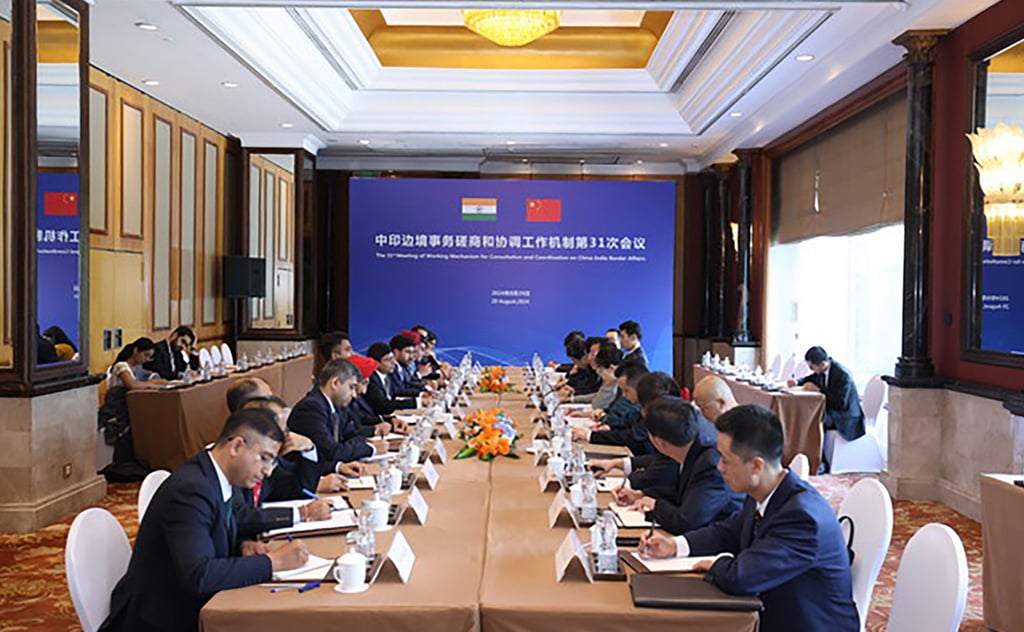China and India have pledged to work towards finding an early solution to their decades-old Himalayan border dispute.
Concluding the 31st round of diplomatic talks on the matter on Thursday, both countries pledged to strengthen connections and continue to de-escalate tensions at the border.
“The two sides agreed to strengthen dialogue and consultation, accommodate each other’s legitimate concerns, and reach a mutually acceptable solution at an early date,” said a Chinese foreign ministry statement issued after the meeting in Beijing.
Both sides will “strictly abide by the border-related agreements” and “turn over a new leaf in the border situation at an early date”, it added.
Largely mirroring China’s positive tone, an Indian foreign ministry statement said that the two sides had agreed to boost communications through both “diplomatic and military channels”.
“Respect for the LAC [Line of Actual Control] is the essential basis for the restoration of normalcy in bilateral relations,” it added.
The Line of Actual Control refers to the effective 3,200km (about 2,000-mile) border line, which has not been precisely defined due to a lack of agreement.
Beijing’s readout made no mention of this term.

The 31st round of border talks came just a month after the previous edition, held in New Delhi, where both sides agreed to speed up negotiations as stand-offs along disputed areas entered their fourth year.
The participants remained largely the same as last time. The meeting was co-chaired by Hong Liang, director general of the Chinese foreign ministry’s Boundary and Oceanic Department, and Gourangalal Das, joint secretary for East Asia from the corresponding Indian ministry.
Diplomats, national defence and immigration department personnel from either side also attended the meeting.
Das also separately met Liu Jinsong, director general of the Department of Asian Affairs at the foreign ministry.
The pair exchanged views on bilateral relations as well as regional issues of mutual interest and concern, a statement from the Chinese foreign ministry said on Thursday.
Disputed border claims have long been a sticking point in China-India relations, sparking a brief but bloody war in 1962. They have been divided since then by the LAC, having failed to reach an official agreement on the precise location of the border or more than 120,000 sq km (over 46,330 square miles) of disputed territory.
Both countries maintain a significant military presence in the border areas.
The first round of diplomatic talks to resolve border tensions were held in 2012. Officially named the Working Mechanism for Consultation and Coordination on India-China Border Affairs (WMCC), the talks were proposed by then Chinese premier Wen Jiabao during a visit to India in 2010, a time of growing economic closeness.
However, border tensions have heated up since 2020, after clashes in the Galwan River valley left dozens of Indian troops and at least four Chinese soldiers dead. Further border clashes have been reported at least twice since 2022.
Multiple senior defence-level and diplomatic talks followed. These have helped to ease tensions but have not fundamentally changed the military stand-off along the western Himalayas.
Last month, Chinese Foreign Minister Wang Yi met his Indian counterpart Subrahmanyam Jaishankar on the sidelines of a regional gathering in Kazakhstan, as well as two weeks later in Laos. The moves were largely seen as part of efforts from both sides to ease the strain in ties.


